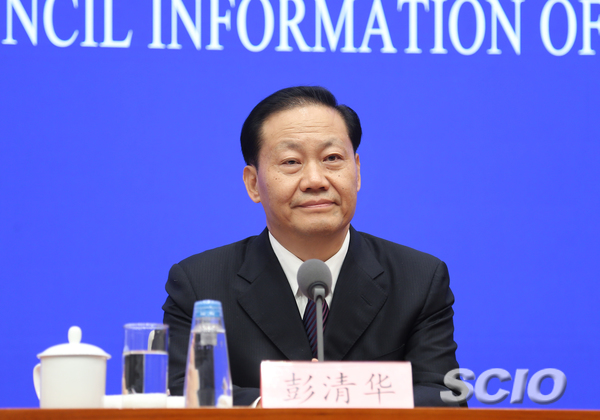Sichuan: 70 years on

Editor's Note:
Starting this May, the State Council Information Office has held news conferences for each province, autonomous region and municipality to give briefings about their social and economic development since the founding of New China 70 years ago.
During the Sichuan session held June 17 in Beijing, Peng Qinghua, secretary of the CPC Sichuan Provincial Committee and governor Yin Li explained the province's achievements.

Taking economic development to a new stage
Sichuan province spent the 58 years from 1949 to 2007 working to achieve a regional GDP of 1 trillion yuan ($141.8 billion). In 2018, its GDP was close to 4.07 trillion yuan. The industrial structure has been optimized and the service sector’s share of GDP in 2018 exceeded 50 percent for the first time.
In 2018, Sichuan's economy saw growth of 8 percent, and it has maintained steady growth in the first five months of 2019.
Establishing a modern comprehensive transport system
Before 1949, infrastructure in Sichuan was poor, with no railway line operating there and only about 2,000 kilometers of low-level highway.
To date, the province has built 31 passageways connecting Sichuan with other areas and its railways have covered 4,970 km. More than 3,500 China-Europe freight trains depart from Chengdu, the capital of Sichuan, ranking first in China. The length of highways in the province has exceeded 330,000 km, including 7,238 km of expressway.
Constantly improving people's livelihoods
The per capita disposable income of urban residents in Sichuan reached 33,216 yuan in 2018, 255 times the amount in the early days of New China, while that of rural residents was 13,331 yuan, 239 times the amount in that earlier period.
The Engel coefficient for urban and rural residents decreased from 59.2 percent and 73.6 percent in 1978 to 31.8 percent and 35.2 percent in 2018.
Sichuan has made great progress in poverty alleviation. In the past five years, an average of over 1.1 million people in the province have been lifted out of poverty. The incidence of poverty dropped from 9.6 percent to 1.1 percent in that time.
Boosting national unity
The autonomous prefectures of Garze Tibetan, Aba Tibetan and Qiang, and Liangshan Yi are listed as deep poverty areas by the country and have gained strong support.
The poor population in rural Tibetan Plateau areas dropped from 356,000 in 2013 to 46,000 in 2018, and the incidence of poverty decreased from 20.1 percent to 2.6 percent. It is expected that all impoverished counties in the Sichuan Tibetan region will be lifted out of poverty by the end of 2019.
The number of poor people in Daliang and Xiaoliang mountain areas dropped from 797,000 in 2013 to 318,000 in 2018, and the incidence of poverty decreased from 28.9 percent to 11.5 percent.
Maintaining opening-up in a three-dimensional and comprehensive way
Sichuan has established economic and trade relations with over 220 countries and regions, while 17 countries have set up consulates in the province. Among World Top 500 companies, 347 have launched branches in Sichuan.
The province's total import and export volume increased by 29.2 percent year-on-year in 2018 and has maintained rapid increase in the first five months of 2019.



